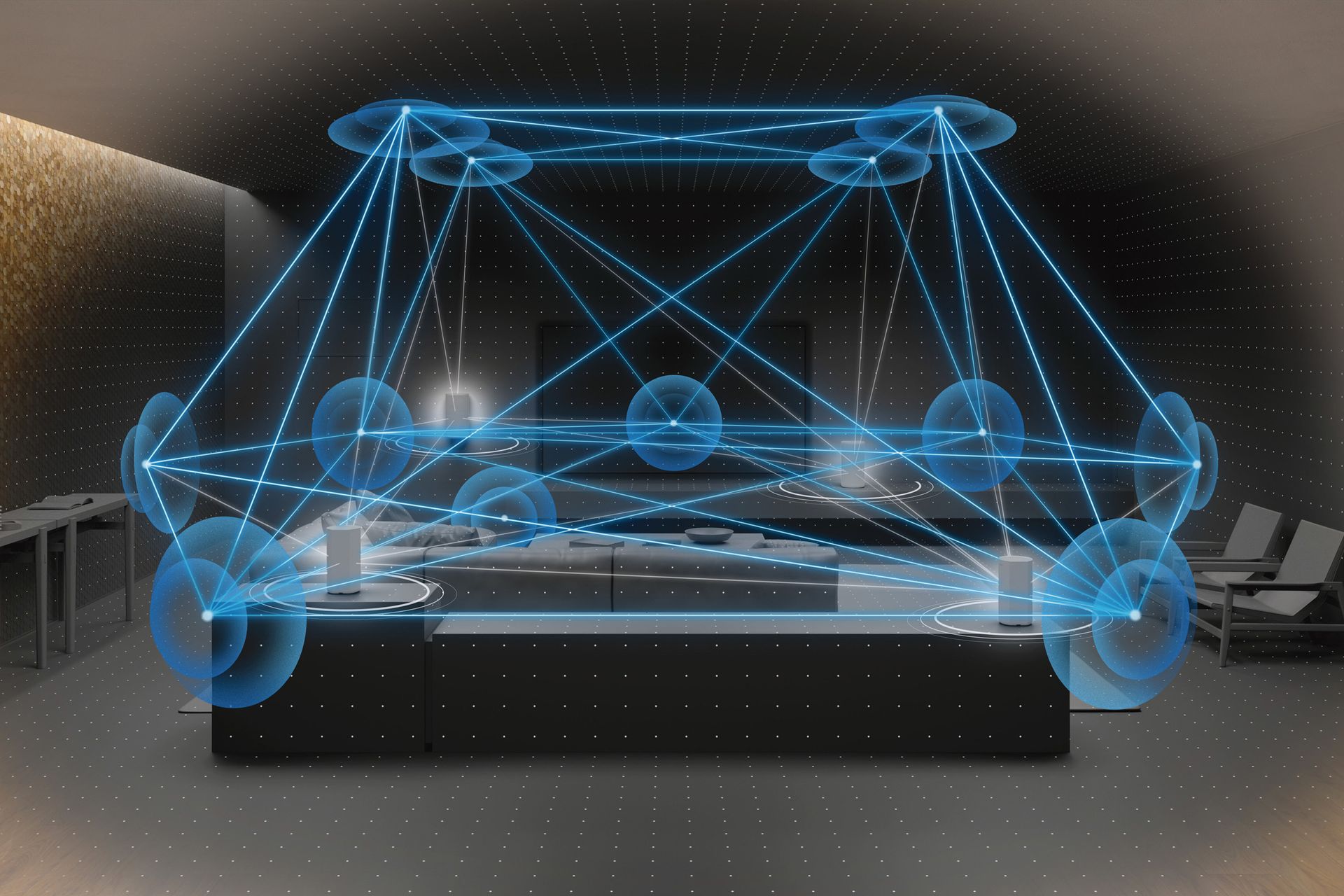What is spatial audio? A beginner's guide to more immersive sound in your home
Spatial audio is the future of sound in your home, but what is it? And how can you watch TV and films, and listen to music with three-dimensional audio?


Have you heard of spatial audio? While it's given name doesn't sound particularly exciting, it's an idea that's going to revolutionize how you watch TV and films, and even listen to music at home.
Home sound systems are becoming more immersive than ever before. While you might know the concepts of pinning sounds around you from your traditional surround sound systems, new spatial technologies are elevating your living room TV, while making set-ups easier and more efficient.
It's a term you're going to be hearing more of. Not only have Apple coined the term for its Airpod sound tech, but Netflix has just announced that a number of its programmes can be enjoyed with spatial audio, without requiring a traditional surround sound set-up.
For the uninitiated, the term spatial audio doesn't mean much though. So, we've created a beginners guide to what can be referred to as immersive, 3D or spatial audio, depending on the system you choose (and who you ask), so you can understand why it's something worth investigating. .
What's different about spatial audio?
Spatial audio is, in essence, a surround sound system, and many examples of it use Dolby Atmos, an audio format designed originally for cinemas.
However, where classic surround sound set-ups have required multiple speakers on different channels, it’s now possible to recreate the effect with a much more limited set-up, sometimes just a single soundbar. Think of spatial audio like a sphere of sound rather than directional. It’s even possible to include sound from overhead without requiring a ceiling speaker, as soundbars with upfiring speakers can bounce certain sounds from the ceiling.
Netflix's version of spatial audio has been created with Sennheiser, and uses traditional stereo speakers to pin sounds, while also supporting surround sound formats such as Dolby Atmos.
What does spatial audio sound like?
In this 'sound sphere', certain sounds can be pinned around you. That means, when someone runs past the screen in the film you’re watching, the sound can travel and make it sound like they’re running past you, in a realistic way. Likewise, when a plane flies overhead or a helicopter takes off, that sound comes from above you (if you’ve got the right set up.)

This 360 Reality Audio set-up from Sony uses multiple speakers to create the 'sound sphere'.
What can I watch with spatial audio?
The key to spatial audio is having content that has been created in the right format for this sound technology to work. The most common format is still Dolby Atmos, and you’ll find a number of (largely) films that support it on any given platform, whether it be Netflix, Amazon Prime or Disney+.
You should find a symbol indicating whether the content is Dolby Atmos compatible and you’ll likely need to stream in whatever Ultra HD format the platform has. To try Netflix's new spatial audio, you can search 'spatial audio' in the search bar, and it will suggest compatible titles. At the moment, this includes Stranger Things, The Witcher and The Adam Project.
Can I listen to music with spatial audio?
The real evolution of spatial audio comes in the form of listening to music, a new frontier for surround sound, where it has been best listened to in stereo until now. The likes of Sony 360 Reality Audio, for example, can pin different instruments around the sound sphere, making it sound like you’re sitting in the midst of an orchestra. Again, in general this requires music content that’s been recorded in a certain format to work, so only certain songs or artists may be available to listen to in spatial audio, no matter your set-up.

What do I need to create a spatial audio set-up?
Spatial audio can be added and integrated into an existing multi-speaker set-up relatively easily, but Dolby Atmos is also pretty standard these days in high-end soundbars, such as the Bose Smart Soundbar 900 or Sonos Arc.
If you’re buying a new TV, Dolby Atmos can come built-in, but to really make the most of spatial audio, you’ll want some sort of external speaker set-up.
Wireless speaker's such as the Echo Studio and Apple Homepod are compatible with Dolby Atmos, but don't have upfiring speakers. Sony's SRS-RA5000 does, however, and is compatible with Sony 360 Reality Audio content.
Spatial audio has also been adopted into headphones too. Apple’s Spatial Audio technology is what you’ll first come across if you search for the term, with its AirPods Pro and AirPods Max now capable of immersing users in this 3D soundscape when using iOS. Other headphones can still work with other spatial audio technology.
Be The First To Know
The Livingetc newsletter is your shortcut to the now and the next in home design. Subscribe today to receive a stunning free 200-page book of the best homes from around the world.

Hugh is the Editor of Livingetc.com. From working on a number of home, design and property publications and websites, including Grand Designs, ICON and specialist kitchen and bathroom magazines, Hugh has developed a passion for modern architecture, impactful interiors and green homes. Whether moonlighting as an interior decorator for private clients or renovating the Victorian terrace in Essex where he lives (DIYing as much of the work as possible), you’ll find that Hugh has an overarching fondness for luxurious minimalism, abstract shapes and all things beige. He’s just finished a kitchen and garden renovation, and has eyes set on a bathroom makeover for 2024.
-
 The 12 Best Table Lamps for Reading —I'm a Certified Bookworm (and Shopping Expert)
The 12 Best Table Lamps for Reading —I'm a Certified Bookworm (and Shopping Expert)When it comes to table lamps for reading, I don't mess around. If you're the same, this edit is for YOU (and your books, or course — and good recommendations?)
By Brigid Kennedy Published
-
 "It's Scandi Meets Californian-Cool" — The New Anthro Collab With Katie Hodges Hits Just the Right Style Note
"It's Scandi Meets Californian-Cool" — The New Anthro Collab With Katie Hodges Hits Just the Right Style NoteThe LA-based interior designer merges coastal cool with Scandinavian simplicity for a delightfully lived-in collection of elevated home furnishings
By Julia Demer Published

